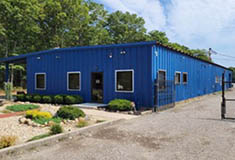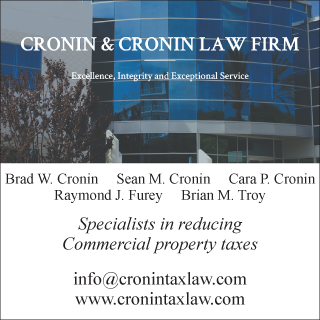News:
Long Island
Posted: May 21, 2012
Protect against the risks of horizontal exhaustion: Being an additional insured is no longer enough
Property owners and developers engaged in construction must take every precaution to guard against liabilities from construction accidents. This is especially important in New York, where owners (and general contractors) can be held "strictly liable" for certain injuries under New York's Labor Law. Simply said, owners may be liable for injuries sustained by workers on their property even if that owner is not negligent. Given the heightened risk to owners, it is imperative that they take the steps identified below to protect themselves.
Owners typically procure primary and excess commercial general liability (CGL) coverage for themselves. CGL insurance protects against liabilities arising from bodily injuries and property damage. Merely procuring CGL coverage, however, is not enough. If an accident results in liabilities which exceed an owner's coverage limits, its personal assets may be at risk. Further, if an owner's insurer pays on a claim, it may affect future premiums.
In an effort to reduce any potential exposure, owners have traditionally sought to be named as an additional insured under the insurance policies of contractors and subcontractors. Some CGL policies issued to owners actually require that the owner be named as an additional insured on the contractors' policies. This is generally accomplished through insurance procurement requirements written into the contracts between owners and their general contractors and those between general contractors and their subcontractors. While additional insured coverage provides an owner with some protections, recent developments in New York law have limited those protections. Owners should still insist upon being named as an additional insured on all primary and excess policies issued to the contractors working on a project, but as discussed below, additional precautions should be taken.
Recent New York Appellate Division decisions have established the applicability of "horizontal exhaustion" of insurance in cases involving construction accidents. Horizontal exhaustion means that in the event of an accident, all applicable primary coverage must be exhausted before any excess coverage is implicated. Here is an example of how horizontal exhaustion works:
Owner is developing a site. Owner hires GC as his general contractor and GC hires sub to perform work. An employee of sub is injured on the site and sues owner and GC, asserting causes of action under New York Labor Law. Owner is named as an additional insured under GC's $1 million primary and $2 million excess CGL policies. Owner also has his own $1 million primary policy. Sub's employee is eventually granted $2 million in damages for his injuries. Under the principal of horizontal exhaustion, GC's $1 million primary policy would pay first and then owner's $1 million primary policy would pay next, prior to GC's excess policy.
While the principals of horizontal exhaustion are generally counter to the intention of the insurance procurement provisions in the contracts between the parties involved in a construction project, courts have ruled that the priority of coverage is determined by the language of the policies, not the underlying construction contracts. Thus, in the above scenario, even though owner did not intend for his primary policy to pay until all $3 million of coverage available to GC was exhausted, it actually kicked in as the second layer of coverage.
Some owners have sought to combat horizontal exhaustion by requiring that contractors procure primary insurance with higher limits. Primary CGL coverage usually provides $1 million per an occurrence with $2 million in aggregate coverage. Some owners now require that contractors carry primary coverage of $2 million per an occurrence with $4 million in the aggregate. Increased coverage results in increased premiums which contractors likely pass back to the owners by raising the price of their services. In addition, some general contractors may not be able to obtain those coverage limits precluding the owner from hiring them.
A second and more proficient way in which owners can protect themselves is by including indemnity provisions in their favor in their contract with the general contractor and all contracts between the general contractor and subcontractors. An indemnity provision allows an owner to pass its vicarious liability (such as claims under Labor Law) back to the general contractor or the subcontractors on a project. A well drafted indemnity provision will eliminate "horizontal exhaustion" and replace it with "vertical exhaustion;" i.e., a contractor's primary and excess coverage would both have to be exhausted before the primary policy of an owner is implicated. The legal reason for this is one of efficiency; if an owner can contractually pass its liability back to a contractor, the owner's primary insurer would simply seek to recover any amount it paid on a claim against the contractor's excess insurer, creating needless litigation. It should be noted, that if an owner's liability is not strictly vicarious (i.e., the owner was negligent) its contractual indemnity provision may be invalid and not result in a vertical exhaustion scheme for the claim.
Andrew Richards, Esq., is partner at Kaufman Dolowich Voluck & Gonzo LLP, Woodbury, N.Y.
Tags:
Long Island
MORE FROM Long Island
Suffolk County IDA supports expansion of A&Z Pharmaceuticals
Hauppauge, NY The Suffolk County Industrial Development Agency (IDA) has granted preliminary approval of a financial incentive package that will assist a manufacturer in expanding its business by manufacturing more prescription (Rx) pharmaceuticals in addition to its existing over-the-counter

Quick Hits
Columns and Thought Leadership

The evolving relationship of environmental consultants and the lending community - by Chuck Merritt
When Environmental Site Assessments (ESA) were first part of commercial real estate risk management, it was the lenders driving this requirement. When a borrower wanted a loan on a property, banks would utilize a list of “Approved Consultants” to order the report on both refinances and purchases.








.gif)
.jpg)